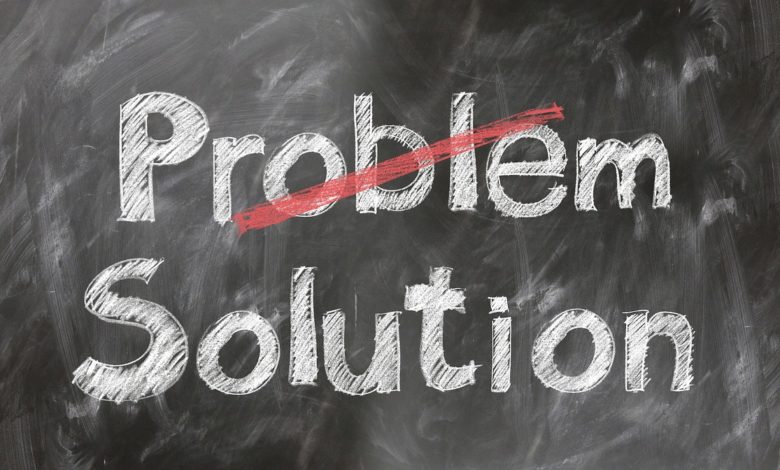
All marketing is a promise to perform. Your product or service does the performing in exchange for something from the prospect. You ask for their money and their time, and you solve a problem for them:
- Hot pizza delivered to your door in 30 minutes? Give us $9.99
- 15% or more off your car insurance? Give us 15 minutes on the phone
- Want your front yard to be the envy of the neighborhood? Let us give you a free in-home estimate
The concept is known in legalese as “express terms,” also known in Latin as quid pro quo. You give, we give. It’s the basis for trust in any relationship. Both parties know, with some certainty, what they are going to get from each other. You cannot have a successful business without establishing trust with your customers. If you have a steady stream of prospects engaging you, they identify that you are worthy of their trust and their business. When you don’t have that steady stream coming in, you need to promote yourself to build the foundations of trust.
The best way to promote yourself to new prospects is through the conversion equation. The four-part equation starts with The Interrupt, which I covered in Part 1 of this series. You need to interrupt the conversation going on in the mind of your prospect. You need to identify that nagging feeling that they need help with. You need to show that you understand two major problems in their lives:
- The problem they have and don’t want
- The need that they want and don’t have
Satisfy one, and you are in great shape. Satisfy both, and you have a new customer instantly. People like to be heard and understood. It builds bridges and creates empathy. It might sell something. Often, it simply serves to get someone’s attention.
You have their attention—what will you do with it?
Your message made it farther than the other 10,000 things the prospect was pitched that day. That’s a major victory. It may solve the prospect’s goal of being understood, but it doesn’t solve the problem of satisfying a need. You have simply earned their attention for a brief amount of time. There is a reason TikTok and Snapchat have so much success. Our attention spans are short. Your window is small, and you need to take advantage of the time you’ve been given. So, now comes “The Engage.”
The Engage
The Engage promises the solution to the problem. It forms the basis for having a relationship with your business. This is where you say: “I understand your problem, and I can fix it! It is one thing to know the problem; it is another thing entirely to provide a solution.
What could be a good solution to these interrupts from Part 1?
Interrupt:
Personal: “Worried that your kid won’t be able to enjoy their birthday because of the pandemic?”
Professional: “Are you absolutely positive you could do more business if more people knew about you?”
Engage:
Personal: “There are at least 3 trusted methods to celebrate a birthday—that follow CDC guidelines and practice social distancing. Kids can still have a special day that’s just for them and a once-in-a-lifetime experience in a safe environment!”
Professional: “There are dozens of great ways to generate more awareness of your brand in just one week!”
Take note: These statements only make the promise of the solution; they do not give the solution. You must develop a unique market position to separate yourself from your customers. You are establishing yourself as a trusted resource to solve a unique problem. You want to position yourself as an authority—a subject matter expert.
The benefit of expertise
Why do people fall prey to scams and con men? Where does the term “con” come from? Confidence. Scammers show confidence, and they give their victims confidence. The underlying reason is that we want to do business with people that sound like they know what they are doing, know all the answers, and have the experience to provide the best solution. Winners eliminate risk. We want to do business with a sure thing. We want a great deal because great deals eliminate risk. This is a universal law of human behavior. People follow leaders who show confidence. Your marketing needs to do the same. The Engage is simply an example to show the prospect that you are a winner and know the answer.
You don’t need to feel bad about saying this because you do know the answer. You are a pro!
It’s not enough to be the winner
You caught the prospect’s attention, and you promised a solution. Now, you need to deliver. This is the crucial point in the transaction where you can seal the deal or tarnish your brand forever. You are beginning to form a bond of trust with your prospect. You got their attention when you identified the hot button. Then you reassured them that you could solve their problem by promising a solution. You gave them confidence that an expert in the field can address the issue they have been struggling with. Say it with confidence. Say it like the expert you are.
Now it’s time to prove it. You need to teach them how you can solve their problem and demonstrate why you are the expert they need. This is where you separate yourself from the amateurs and loudmouths who make false promises. It’s time to teach your prospects the information they need to know to be more informed. Give them insider info to help them make better purchase decisions. Get them away from the trap of comparing prices by educating them on your industry and your products.
The Engage is the second part of a four-part conversion equation. Next time we’ll talk about the third part: The Educate.



